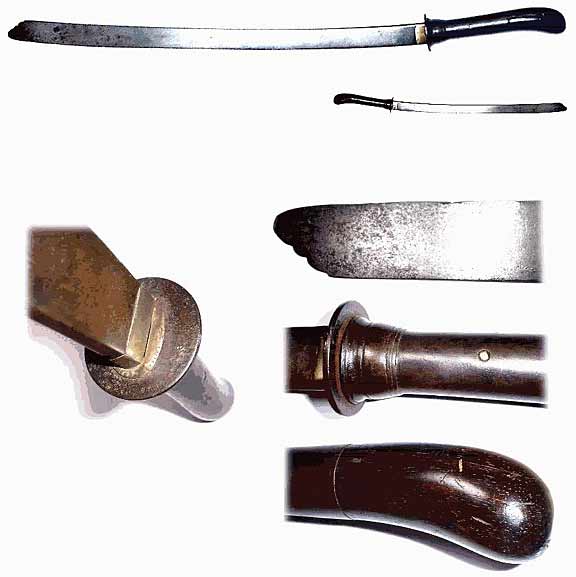
 |
|
|
|
|
#1 |
|
Member
Join Date: Dec 2004
Location: What is still UK
Posts: 5,935
|
You have done it again, what a stunning piece, I love the handle. It would be intresting to find what the bone came from. My first thoughts are it is maybe from Burma then possibly anywhere between there and Indonesia. Somewhere that has monkeys? Tim
|
|
|

|
|
|
#2 | |
|
Member
Join Date: Dec 2004
Posts: 987
|
Quote:
Ian has a bunch of swords from that area, so I expect he will have more to say. |
|
|
|

|
|
|
#3 |
|
Member
Join Date: Dec 2004
Posts: 1,247
|
Hi Freddy,
Neat knife! My vote's with Mark, but my first thought on seeing it was, "Oh, that's a quick-change dha." What's a quick-change dha, do you ask? A quick-change dha is where you say, with total confidence, "Oh, that's a dha," and quickly change the subject.    My take is it's hard to put a terminal ferrule on a leg bone, and that someone in "Dha country" (perhaps a Hmong?) thought that the bone would be cool as a knife handle. Fearn |
|
|

|
|
|
#4 |
|
Vikingsword Staff
Join Date: Dec 2004
Location: The Aussie Bush
Posts: 4,613
|
Hi Freddy:
Not a dha IMO for several reasons, but close geographically. First, the collar next to the small circular guard is reminiscent of an habaki (as Mark noted), and this Japanese style is found rarely on S. Vietnamese swords/knives but is absent on traditional dha. I have an old sword-length example of a Viet dha/dao with pictures on the old site I will try to find. A small circular guard is seen on some dha from Thailand, Laos, Cambodia. Second, the rattan work on the scabbard bindings is very coarse and atypical for usual dha scabbards (Burmese, Thai, Lao and Cambodian scabbards feature finely plaited rattan) -- more reminiscent of the Philippines, Borneo, and possibly Vietnam. Third, there is a slight swell to the blade width. There are definitely dha with this feature (notably northern Thai, Lao, and perhaps Cambodian; almost never Burmese), while some Vietnamese knives also have this profile. You can see where this is heading. My best guess is Vietnamese, more likely southern rather than northern. Interesting knife. What'ya want for it Freddy?  Ian. Edit: I just reread Freddy's original post and had missed mention of the Indochine coin the first time. That certainly makes a Vietnamese origin very likely. What is today Vietnam, Cambodia and Laos comprised French IndoChina in the latter part of the 19th and first half of the 20th C. It makes sense that a knife from French IndoChina would end up in France and be found in a small Belgium auction. Great find Freddy -- swords and knives from this area and era are uncommon. Congratulations. Ian. Here is the old picture of the Vietnamese sword I mentioned above:  Last edited by Ian; 17th August 2005 at 10:12 AM. Reason: Adding picture |
|
|

|
 |
|
|